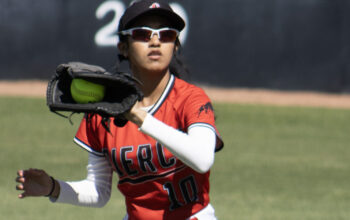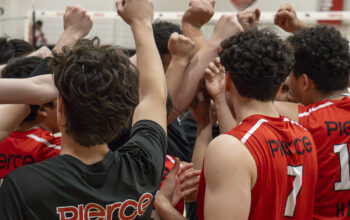Mark Gilman
Since 1974 there are nine words that are not as bad as they used to be.
“You’re done for the next 8 to 16 months,” those are the words said in the docs office after it has been determined that Tommy John surgery will be required.
The sepulchral mood of the room can only be described by any athlete with the slightest will to compete as life altering.
“This was the first time since I was old enough to remember that I couldn’t play ball,” Pierce College outfielder Zack Gilula said having been just two years removed from the surgery. “My UCL (ulnar collateral ligament) was gone and once I heard the news, I didn’t know what to do.”
The surgery is named after former major league baseball pitcher Tommy John, a member of the Los Angeles Dodgers during the 70’s was the first professional athlete to successfully undergo the operation in 1974 having a ligament within his medial elbow replaced with a tendon elsewhere in the body (often a forearm, hamstring, knee, or foot).
Dr. Arthur Ting of Fremont, Ca who specializes in orthopedic surgery has done countless Tommy John reconstructions over the years having worked on some of the finest professional, collegiate and high school athletes that the Bay Area has to offer.
“The hardest part is weaving the new tendon in a figure-eight type pattern through the holes that have been drilled in the ulna and humerus bone (part of the elbow joint),” Dr. Ting said via e-mail. “While it’s a tricky procedure, it’s one that has a very high success rate.”
Playing through injuries and forcing yourself to get out there and compete is nothing new to athletes. Everyone is always working to get ahead, and then stay ahead.
“I was constantly playing through the pain,” Gilula said. “The over-use caught up with me and I wasn’t on the ball field for 16 months.”
Now in some cases it is perceived that pitchers can sometimes throw harder after having this procedure done. Dr. Tong doesn’t share this opinion.
“This is a classic misconception due to the fact that most pitchers’ UCL have been slowly deteriorating for months or even years prior to surgery and most pay more attention to their post surgery conditioning habits in trying to get back onto the field,” Dr. Ting said.
As of 2009, the success rate toward complete rehabilitation was 85-92%, prompting most to go ahead with the surgery with little questions asked.
“It’s great getting back on the field and being able to help my team win games,” Gilula said.



